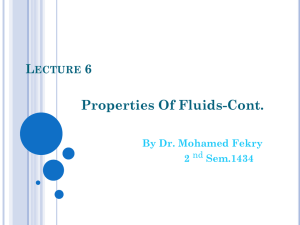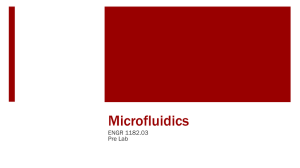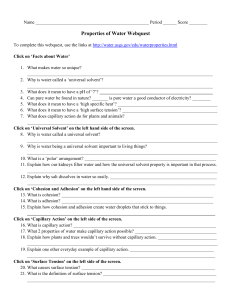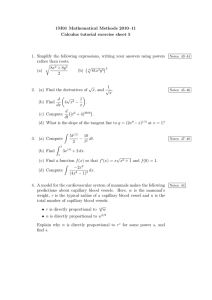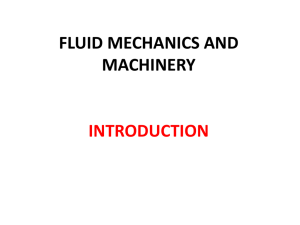Surface Tension & Capillary Action: Physics Quiz
advertisement
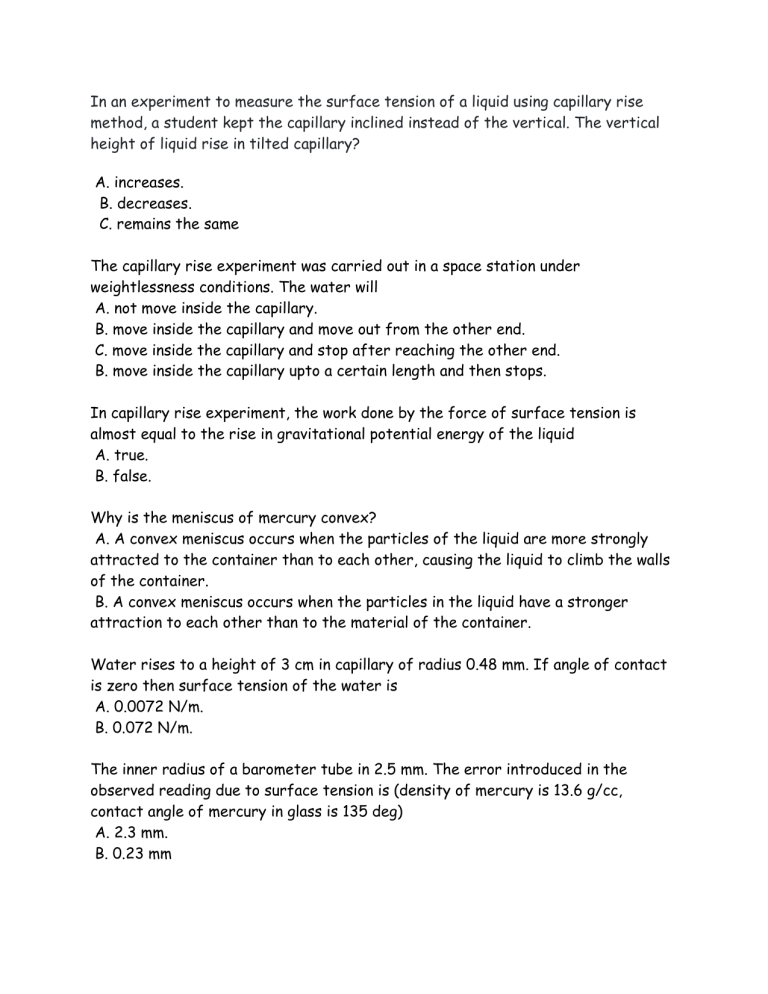
In an experiment to measure the surface tension of a liquid using capillary rise method, a student kept the capillary inclined instead of the vertical. The vertical height of liquid rise in tilted capillary? A. increases. B. decreases. C. remains the same The capillary rise experiment was carried out in a space station under weightlessness conditions. The water will A. not move inside the capillary. B. move inside the capillary and move out from the other end. C. move inside the capillary and stop after reaching the other end. B. move inside the capillary upto a certain length and then stops. In capillary rise experiment, the work done by the force of surface tension is almost equal to the rise in gravitational potential energy of the liquid A. true. B. false. Why is the meniscus of mercury convex? A. A convex meniscus occurs when the particles of the liquid are more strongly attracted to the container than to each other, causing the liquid to climb the walls of the container. B. A convex meniscus occurs when the particles in the liquid have a stronger attraction to each other than to the material of the container. Water rises to a height of 3 cm in capillary of radius 0.48 mm. If angle of contact is zero then surface tension of the water is A. 0.0072 N/m. B. 0.072 N/m. The inner radius of a barometer tube in 2.5 mm. The error introduced in the observed reading due to surface tension is (density of mercury is 13.6 g/cc, contact angle of mercury in glass is 135 deg) A. 2.3 mm. B. 0.23 mm The height of liquid rise in a capillary tube depends on the size of the tube but it is independent of the tube material. A. true B. false Two capillary tubes of diameter 6 mm and 3 mm are joined together to form a Utube open at both ends. If the U-tube is filled with water then water levels on the two limbs of the tube are different. A. true B. false 1.You have a small piece of metal that is 1 cm long and weighs 0.1 N. Find out the surface tension. 2.A small insect of about 1.5 cm long is posed upon the water. The surface tension of the water is 5 N/m. Calculate the estimated mass of the insect?
